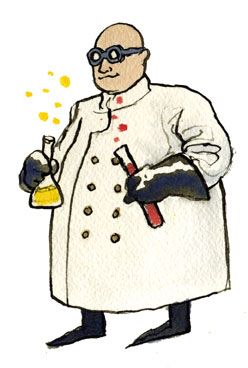
 Muller Thurgau
Muller Thurgau
You are the abused progeny of a scientist’s good intentions, the product of Dr. Muller’s laboratory union of Riesling and Chasselas. Despite the pedigree of this arranged marriage, you were not the brightest of your generation. But in a generation more concerned with making money than the intellectual pursuits of your parents, you would flourish. Your financers backed you wholeheartedly and secured your position as the leader of a German wine machine that would dominate the world with mass production. But alas, your flabby body and dilute character would ultimately lead to your downfall, as the people’s desire grew for a leader with a sharper personality.
Appellations Growing Muller Thurgau Grapes
Appellations producing the most Muller Thurgau wines:
Muller Thurgau Grape Details

Most New World growers do not yearn for early-ripening varieties like Muller-Thurgau. In fact, they would find the flab in its wine to be a distinct disadvantage. However, some Oregon growers have experimented successfully with this white grape, and fine examples have been produced in the Puget Sound vineyards of western Washington State. The variety thrives all over central and Eastern Europe.
The crossing was developed in 1882 by Dr. Hermann Muller, born in the Swiss canton of Thurgau, but then working at the German viticultural station at Geisenheim. It is widely believed that Dr. Muller's intention for this cross was to combine the organoleptic quality of the great Riesling grape with the viticultural reliability -- particularly the early ripening -- of the less noble Silvaner. Yet, recent DNA testing suggests that the variety is actually the result of a Riesling x Chasselas de Courtillier cross, not Riesling and Silvaner. Whatever the ingredients, the recipe resulted in a variety that is all too short on Riesling characteristics. Indeed, it is much shorter on elegant raciness than the more recent crossings Ehrenfelser, Kerner and well-ripened Scheurebe. Muller-Thurgau, which could fairly be said to have been the bane of German wine production, is at long last on the wane. The vine certainly ripens early, even earlier than Silvaner. Unlike Riesling, it can be grown anywhere, producing prodigious quantities -- sometimes double Riesling’s common yield range -- of extremely dull, flabby wine.
